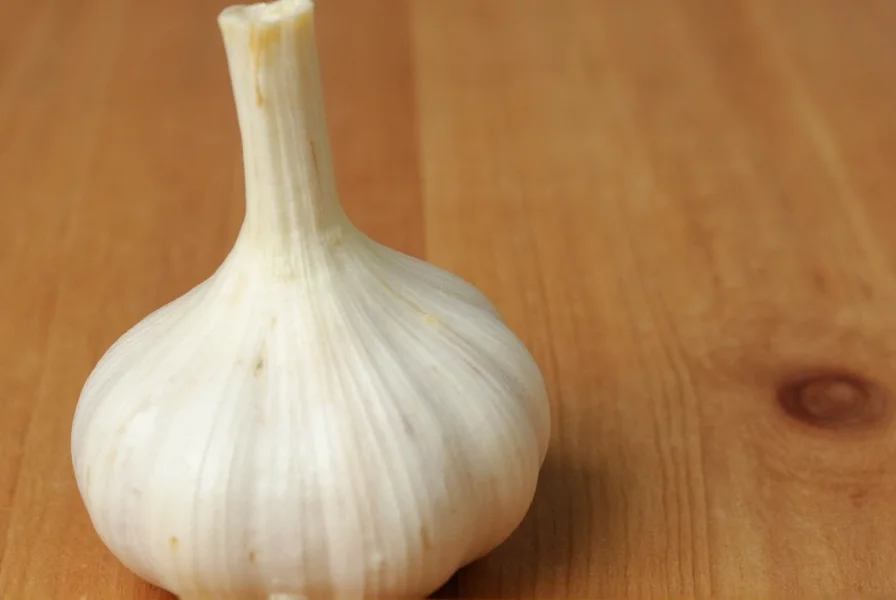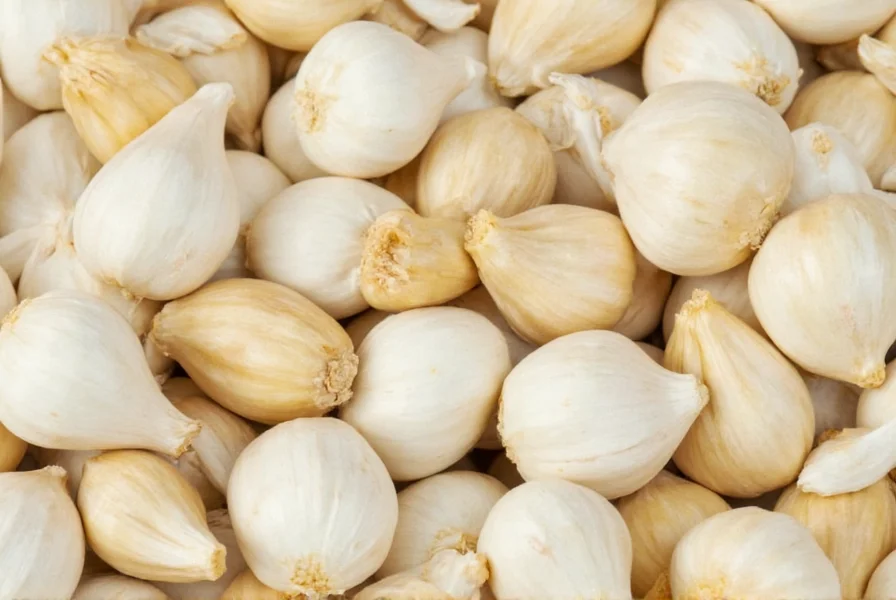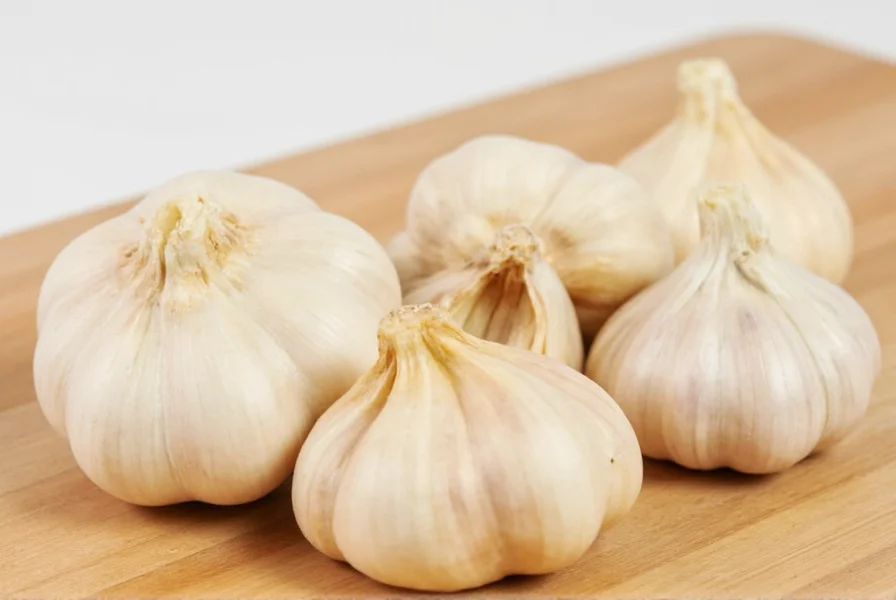When recipes call for garlic, they almost always specify cloves rather than whole bulbs. Understanding what a garlic clove is and how to work with it properly can significantly improve your cooking results. This guide explains everything you need to know about garlic cloves, from their basic structure to practical kitchen applications.
What Exactly Is a Garlic Clove?
A garlic clove represents a single segment within a garlic bulb (also called a head). Each clove functions as an individual growing unit that can be planted to grow a new garlic plant. The cloves cluster together around a central stem inside the bulb's protective outer layers.

Structure and Appearance
Each garlic clove has several distinctive features:
- Papery skin: A thin, dry outer layer that protects the clove
- Firm interior: The edible portion with a pale yellow to off-white color
- Pointed end: The top portion that was attached to the central stem
- Flat base: The bottom portion where roots would grow if planted
The size of individual cloves varies significantly within the same bulb, with outer cloves typically larger than inner ones. This size variation explains why recipes often specify "medium-sized cloves" when giving measurements.
Garlic Bulb vs. Individual Cloves
Understanding the relationship between a whole garlic bulb and its individual cloves helps when following recipes:
| Garlic Characteristic | Typical Range |
|---|---|
| Cloves per bulb (softneck varieties) | 12-20 cloves |
| Cloves per bulb (hardneck varieties) | 4-12 cloves |
| Weight of medium garlic clove (peeled) | 3-7 grams |
| Volume of minced medium clove | 1-1.5 teaspoons |
Working With Garlic Cloves in the Kitchen
Proper handling of garlic cloves affects both flavor and convenience. Here's what you need to know about common kitchen tasks involving garlic cloves:
Separating Cloves From the Bulb
To separate cloves from a whole bulb:
- Place the bulb on a cutting board
- Apply gentle pressure with your palm to loosen the cloves
- Peel away individual cloves as needed
Peeling Garlic Cloves Efficiently
Several effective methods exist for peeling garlic cloves:
- The smash method: Place the clove on a cutting board, lay the flat side of a knife over it, and press down firmly to loosen the skin
- The shake method: Place cloves in a sealed container and shake vigorously to separate skins
- The microwave method: Heat cloves for 10-15 seconds to loosen skins (use with caution)
Understanding Garlic Measurements
Recipes often specify "x cloves of garlic" without providing weight or volume measurements. This can create confusion since clove sizes vary. As a general guideline:
- 1 medium garlic clove ≈ 1 teaspoon minced garlic
- 1 large garlic clove ≈ 1.5 teaspoons minced garlic
- 3-4 medium cloves ≈ 1 tablespoon minced garlic
For precise baking or scientific applications, weighing cloves provides the most accurate measurement, with medium cloves typically weighing 4-6 grams each when peeled.
Storing Individual Garlic Cloves
Once separated from the bulb, garlic cloves have a shorter shelf life. Proper storage techniques include:
- Refrigerate in an airtight container for up to 2 weeks
- Store in olive oil in the refrigerator for up to 1 week (with food safety precautions)
- Avoid storing peeled cloves at room temperature, as this promotes bacterial growth
Common Questions About Garlic Cloves
How many cloves are typically in a garlic bulb?
Most garlic bulbs contain between 10-20 cloves, though this varies by variety. Softneck garlic typically has 12-20 cloves per bulb, while hardneck varieties usually contain 4-12 larger cloves.
What's the difference between a garlic clove and a garlic bulb?
A garlic bulb (or head) is the entire round unit you purchase, consisting of multiple individual segments called cloves. Each bulb contains numerous cloves clustered around a central stem, with each clove individually wrapped in papery skin.
How much minced garlic equals one garlic clove?
One medium-sized garlic clove yields approximately 1 teaspoon of minced garlic. Larger cloves may produce up to 1.5 teaspoons, while smaller cloves might yield only 3/4 teaspoon when minced.
Can I plant a single garlic clove?
Yes, each individual garlic clove can be planted to grow a new garlic bulb. Simply plant the clove pointy-end up about 2 inches deep in well-draining soil. One planted clove will typically produce a new bulb containing multiple cloves after a full growing season.
Why do recipes specify cloves instead of measurements?
Recipes specify cloves because garlic size varies significantly between bulbs and seasons. Using cloves as a measurement accounts for these natural variations, ensuring more consistent flavor intensity than volume measurements would provide.

Practical Applications in Cooking
The form in which you use garlic cloves dramatically affects flavor intensity and distribution:
- Whole cloves: Provide mild, subtle flavor when roasted or simmered
- Sliced cloves: Offer moderate flavor release with visible garlic pieces
- Minced cloves: Deliver maximum flavor intensity and even distribution
- Pounded cloves: Create a paste-like consistency ideal for marinades and dressings
Understanding these different preparations helps you control garlic's pungency in your dishes. For example, whole roasted cloves become sweet and mellow, while raw minced garlic provides a sharp, pungent kick.
Botanical Background
Garlic (Allium sativum) belongs to the same plant family as onions, shallots, and leeks. Each clove contains all the genetic material needed to grow a complete new plant. When planted, the clove's interior provides nutrients for the initial growth until the new plant establishes roots and begins photosynthesis.
The papery skin that surrounds each clove serves as protection against moisture loss and pathogens. This natural packaging allows garlic to remain viable for months when stored properly, making it one of the most shelf-stable fresh ingredients available.











 浙公网安备
33010002000092号
浙公网安备
33010002000092号 浙B2-20120091-4
浙B2-20120091-4